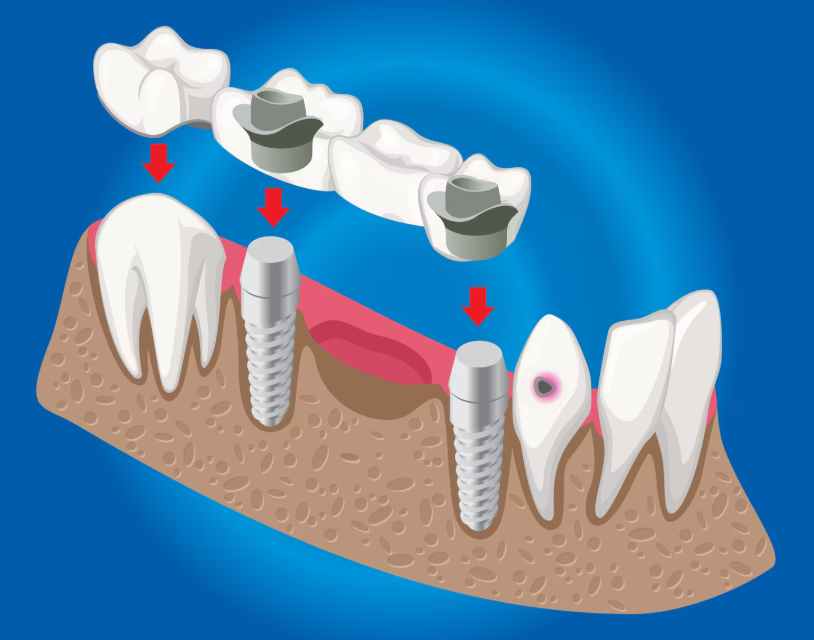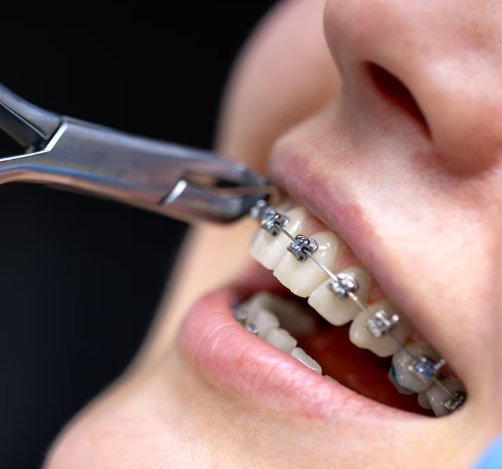Treatment Overview
Mini Dental Implants (MDIs) in Korea are a groundbreaking alternative to traditional implants — offering a faster, less invasive, and more affordable solution for patients needing full-mouth reconstruction.
These implants are smaller in diameter (usually 2–3 mm) but provide strong anchorage for crowns, bridges, or overdentures, even in patients with limited bone density.
Korean dental specialists have perfected this technique using AI-guided navigation, 3D CBCT imaging, and CAD/CAM prosthetic design, ensuring maximum precision and comfort.
Mini implants are ideal for patients who cannot undergo bone grafting or wish to enjoy immediate restoration with minimal recovery time.
Korea’s leadership in digital implantology, robotic surgery, and bioactive implant materials makes it a global hub for advanced mini implant treatments that combine efficiency, aesthetics, and long-term reliability.
Purpose & Benefits
The Mini Dental Implant System is designed to provide a secure, minimally invasive, and cost-effective solution for full-mouth restoration and denture stabilization.
Purpose
- Replace missing teeth or support full dentures using small-diameter implants.
- Offer treatment for patients with limited bone or thin ridges.
- Avoid bone grafting or sinus lift procedures.
- Provide immediate function with shorter treatment times.
- Enhance denture stability and patient confidence.
Benefits
- Minimally Invasive Surgery: Smaller implants require no large incisions or sutures.
- Immediate Function: Teeth or dentures can often be fixed the same day.
- No Bone Grafting Needed: Perfect for patients with bone loss.
- AI-Guided Accuracy: Digital planning ensures ideal implant placement.
- Quick Recovery: Less swelling and downtime compared to standard implants.
- Affordable Treatment: 40–60 % cheaper than conventional implants.
- Long-Term Stability: Over 95–98 % success rate in Korean clinics.
Ideal Candidates
Mini Dental Implants are perfect for patients seeking a simple, fast, and reliable full-mouth solution without major surgery.
Ideal Candidates Include
- Individuals with bone loss or thin jaw ridges.
- Patients unable or unwilling to undergo bone grafting.
- Denture wearers seeking improved stability.
- Those who want immediate results with minimal downtime.
- Individuals looking for a cost-effective, fixed restoration option.
Possible Risks & Complications
While mini dental implants are extremely safe and reliable, minor and temporary effects may occur:
- Slight swelling or soreness for 1–2 days.
- Temporary bite or speech adjustment.
- Rare implant mobility if overloading occurs prematurely.
Korean dental centers minimize these risks through AI navigation, digital torque control, and bioactive implant coatings that enhance stability and healing.
Surgical Techniques Used
Korea’s Mini Dental Implant Procedures integrate digital diagnostics, computer-guided surgery, and CAD/CAM prosthetics to achieve precise, quick, and comfortable outcomes.
Common Techniques Include
- 3D CBCT Bone Scanning: Evaluates jawbone structure and density.
- AI-Guided Surgical Planning: Virtual placement simulation for accuracy.
- Flapless Insertion Technique: No incisions, minimal trauma.
- Immediate Loading: Dentures or crowns placed the same day.
- CAD/CAM Prosthetic Design: Digitally fabricated restorations for a perfect fit.
- Digital Bite Analysis: Ensures balanced occlusion and comfort.
- Intraoral Scanner Verification: Confirms real-time precision during surgery.
Recovery & Aftercare
Recovery from Mini Dental Implant Surgery in Korea is fast and comfortable, with minimal post-operative discomfort thanks to the non-invasive approach.
Aftercare Guidelines
- Eat soft foods for 24–48 hours post-procedure.
- Brush and clean around implants gently with a soft toothbrush.
- Rinse with an antibacterial mouthwash daily.
- Avoid smoking and alcohol during early healing.
- Attend scheduled follow-up appointments for digital monitoring.
Most patients resume daily activities within one day, experiencing minimal swelling or pain.
Results & Longevity
Expected Results
- Stable, natural-looking teeth or dentures.
- Improved chewing and speech function.
- Enhanced facial aesthetics and smile confidence.
- Permanent solution without complex surgery.
Longevity
- Implant lifespan: 15–20 + years with proper care.
- Prosthesis lifespan: 8–12 years depending on materials used.
- Success rate: 95–98 % in top Korean implant centers.
Treatment Process in Korea
Korea’s Mini Dental Implant Workflow combines advanced digital imaging, AI-guided placement, and CAD/CAM prosthetic fabrication to deliver precise, rapid, and safe results.
Step-by-Step Process
- Consultation & 3D CBCT Scan: Digital imaging of jaw and bone structure.
- AI Simulation & Planning: Virtual design of implant positions.
- Flapless Guided Surgery: Small, bloodless implant placement.
- Immediate Prosthesis (Optional): Same-day restoration for instant results.
- Healing & Integration (4–6 weeks): Bone naturally stabilizes implants.
- Final Prosthetic Attachment: Permanent crowns, bridges, or overdentures placed.
- Digital Verification: Ensures perfect alignment and comfort.
Why Korea Is a Top Destination
Korea is internationally recognized for its technological precision, affordability, and aesthetic excellence in implant dentistry — especially mini implants.
- AI & Robotic Navigation: Real-time precision in every procedure.
- Full Digital Workflow: CBCT, CAD/CAM, and intraoral scanning integration.
- No Bone Grafting Required: Ideal for patients with bone loss.
- Painless, Minimally Invasive Surgery: Flapless techniques ensure comfort.
- Global Implant Brands: Osstem®, Dentium®, Straumann®, and Megagen®.
- Affordable Excellence: 40–60 % lower cost than Western clinics.
Korea’s fusion of innovation, safety, and artistry makes it a top global hub for mini implant-based full-mouth reconstruction.
Unique Korean Methods & Technology
- AI-Guided 3D Navigation & Robotic Surgery.
- CAD/CAM Digital Prosthetic Design.
- Laser-Assisted Flapless Surgery.
- Bioactive Surface Titanium Mini Implants.
- Immediate Loading Protocols for Instant Results.
- Real-Time Intraoral Scan Verification.
These advanced methods ensure Mini Dental Implants in Korea deliver exceptional precision, comfort, and long-term satisfaction.
Cost Range
| Type of Treatment | Cost (KRW) | Approx. USD |
|---|---|---|
| Standard Mini Dental Implant (Per Arch) | ₩5,000,000 – ₩7,000,000 | $3,700 – $5,200 |
| Premium AI-Guided Mini Implant System | ₩8,000,000 – ₩10,000,000 | $5,900 – $7,400 |
| Full Digital CAD/CAM Workflow Package | ₩10,000,000 – ₩13,000,000 | $7,400 – $9,600 |
Packages typically include: consultation, 3D CBCT imaging, AI planning, guided surgery, prosthetic design, abutments, and follow-up care.
Popular Clinics
- Seoul National University Dental Hospital: Leaders in minimally invasive and AI-guided implantology.
- Yonsei University Dental Hospital: Specialists in mini implants and digital prosthetic design.
- Asan Medical Center Dental Clinic: Experts in bone-limited implant cases and immediate restorations.
- Samsung Medical Dental Center: Innovators in CAD/CAM and micro-implant integration.
- JK Dental Implant Center (Gangnam): Premium clinic for aesthetic and full-mouth mini implant solutions.




